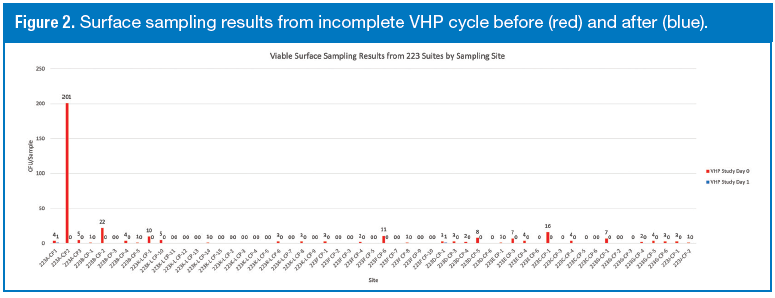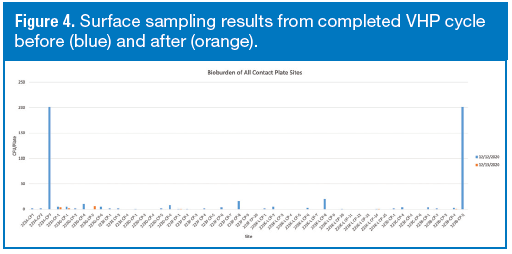Case Study: Nephron Pharmaceuticals Compounding Facility Integrates STERIS VHP® Biodecontamination System
Pharma Insights - Thought Leadership from Marketers | Sponsored Content
Background
Nephron is a rapidly growing manufacturer of generic respiratory medications and a contract manufacturer of blow-fill-seal products. Also, as a 503B compounder, Nephron has made significant investments in the production of high-volume pharmaceutical preparations for interstate distribution. Adapting their production output to the constantly changing needs of the market requires frequent product changeover activities. Pharmaceutical compounding is a time- and labor-intensive venture. Production processes are strictly regulated for quality and safety. Workers require a high level of training and to meet demand, facilities remain in continuous operation.
To meet the aseptic standards associated with this type of work, Nephron spends a considerable amount of time and resources cleaning and disinfecting large production spaces. In 2018, they embarked on a joint project with STERIS to investigate the use of an integrated vaporized hydrogen peroxide (VHP) biodecontamination system to reduce the time associated with manual disinfection. This case study will provide insight into Nephron’s experience adopting an integrated VHP approach, the challenges encountered, and results achieved.
Nephron’s Existing Decontamination Process
Nephron performs several different sanitization steps daily. These include start-up cleaning, routine medial cleaning, scheduled cleaning, gross and triple cleaning. Nephron has six distinct zones that require frequent decontamination. Nephron’s maximum target cycle time, for a potential VHP biodecontamination cycle (including the aeration phase), was 6 hours.
Nephron Internal Evaluation and Decision
Nephron trialed other decontamination technologies. STERIS VHP was selected because of its ability to decontaminate large spaces and, perhaps more importantly, its ability to integrate with their building automation system. This ability to automate their decontamination process promised to reduce operating costs, improve flexibility, and ensure process consistency.
Nephron also chose to work with STERIS because of the company’s technical expertise and integration support services. These services include cycle development assistance, operator training, installation support, factory acceptance testing, site acceptance testing, installation qualification/operational qualification, preventative maintenance, and calibration. No other company offered the same track record of success or level of technical expertise.
The Integration Plan
As with any gaseous decontamination process, there are bound to be uncertainties. Nephron’s strategy to address these uncertainties was to dedicate one of their suites in their facility, for testing and developing standards for future VHP integration. To that end, this “testing environment” would be modified and run with multiple VHP cycles to create a process for the modification of other suites in their facility.
The Initial Test Cycle
A VHP test run was completed in the dedicated testing suite to determine how the system performed with the room in its current state. The first cycle with Vaprox® Hydrogen Peroxide Sterilant had to be aborted mid-way to make some necessary system adjustments. While this test was unsuccessful, it did generate initial environmental data that was very encouraging (Figures 1 and 2)


First Completed Cycle
With the knowledge gained during the previous test and subsequent modifications to the system, a successful VHP decontamination cycle was completed on the next attempt. Moreover, the test cycle was completed in 3 hours and 2 minutes, nearly 50% faster than the originally targeted cycle time of less than 6 hours. Further, the data indicated that the environmental monitoring targets had been reached (Figures 3 and 4).


Realized Benefits of VHP Integration
Nephron found the results of the first phase of integration extremely promising. Going forward, the STERIS system will be a valuable tool to significantly reduce manual cleaning time and to improve efficacy due to the automated nature of VHP decontamination. In addition to the automation benefits, the target cycle time of 6 hours was cut in half. Data generated during testing, supports the premise that short exposures of high concentrations of VHP can effectively reduce both airborne and surface counts of viable microorganisms. This means the time-consuming manual cleaning process could now be completed in less than 3 hours. STERIS and Nephron will continue to work together to implement this “facility of the future” biodecontamination system into the rest of their process.
To read the full case study “Nephron Pharmaceuticals Compounding Facility Integrates STERIS VHP® Biodecontamination System” visit https://www.pharmtech.com/steris_VHP_casestudy.